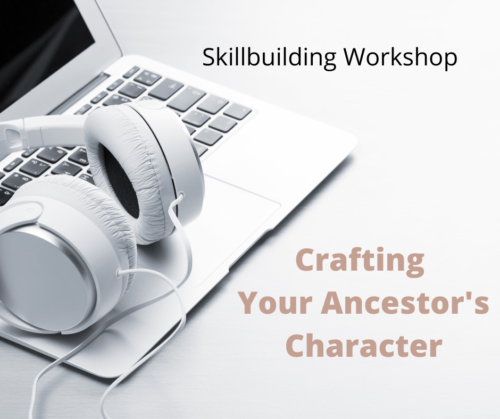But I don’t have a photo of my ancestor
4 thought on “But I don’t have a photo of my ancestor”
Comments are closed.
Related Post
How to Identify Your Ancestor’s CharacterHow to Identify Your Ancestor’s Character
Character development is an important step in bringing your ancestor to the page. But unfortunately, few writers take the time to fully flesh out their ancestor’s character before they write their story. This leaves the reader with a flat and unremarkable character. If you want to write about real people, then it’s critical we do the work of character development. Today’s video offers some initial first steps in the process.


Who is the Enemy?Who is the Enemy?
Once you’ve identified the conflict and obstacles that your ancestor faced it shouldn’t be too hard to identify the enemy, the source of the obstacles, the antagonist.
While your antagonist may be human, another person, even another ancestor, the enemy may come in many forms. The enemy may also be a thing, a concept or your protagonist ancestor himself. The antagonist may originate from a number of sources and could be both friendly and unfriendly.
The antagonist in your family history story is going to be the person or thing that opposes your protagonist ancestor in some way and attempts to stop him from achieving his goal. Consider who your ancestor is trying to defeat in telling their story, the source of the obstacles and conflict.
The antagonist can be a person with good intentions keeping the protag ancestor from harmful choices; it may be someone trying to stand in the protags way with their own agenda.
Here are a few questions to consider when discovering the antagonist in your family history story.
- Who or what is the source of the obstacles?
- What type of antagonist are you dealing with? Person, thing, idea, self?
- What are the antagonist’s intentions?
- What is motivating the antagonist?
Finding the Enemy in a Family History
Finding the obstacles that your ancestor faced in life can come from a number of directions. While your story may have a more traditional antagonist in the form of a person or another ancestor, there may be other entities that are the source of your ancestor’s obstacles, here are a few examples.
Institutions – banks, big business, government, etc.
Social Organizations – local community organizations, schools, neighbourhood, a church, a family, a boss or co-worker.
Nature – hurricanes, tornadoes, floods, fires, the weather, illness, mountains, jungles.
Self- what we do to ourselves knowingly or unknowingly, vices, how we feel about ourselves, or how our lives can keep us from reaching our goals.
Medical – issues that your ancestor faces or someone close to them faces. i.e. debilitating diseases, handicaps, mental health.
Your family history story is built around your ancestor’s conflict and the obstacles they overcame. There are many psychological, cultural, sociological, physiological and religious ideas that may offer challenges in your ancestor’s life from which you can structure their story and find an antagonist.
Consider your research and find the challenges your ancestor faced and what obstacles stood in their way. Give your ancestor an antagonist by discovering who or what was behind those obstacles.
Consider using the same ancestor profile we used in our workbook, Authentic Ancestors, to complete a character profile on your antagonist . It’s important to know the antagonist as well as you know your protagonist ancestor.
Very good. Thank you for the many suggestions.
Thanks, Lynn, this Story LIne was a nice reminder to researching different avenues to make our ancestors come alive for the reader.
Thank you so much for this video. One of my biggest frustrations is not having a photo of my Great Great Grandpa. I’m writing a book about him and I can’t believe I can’t find a photo of him anywhere. Considering he was a Capt. in the Civil War and fairly famous/infamous in his time due to a feud he was involved in after the war. Ultimately he was murdered and his killer was hung.
There are a LOT of newspaper articles on him and this feud, even written about overseas, but it seem not one photo can be found of him. I do have descriptions of him and photos of close male relatives so, I guess I’ll have to build a picture in everyone’s minds with those.
Thanks again!
This was very helpful. I am still flushing out people and dates and hope to add more info later.